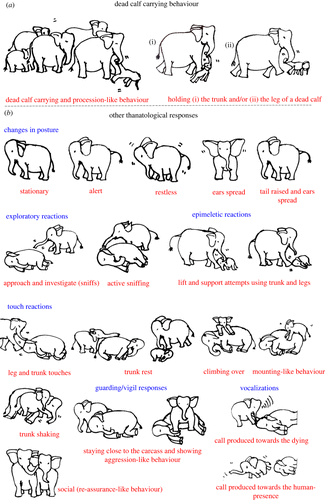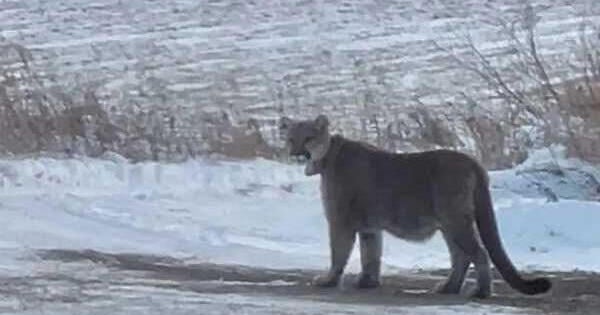Elephants may mourn deaths, researchers found using YouTube videos
Researchers studying Asian elephants used an unexpected resource to learn about how the animal responds to death: YouTube.
Rare behaviors in animals — like how they respond to the death of a species member — can be hard to document because they are just that: rare. So, it often takes being at the right place at the right time, scientists from the Centre for Ecological Sciences at the Indian Institute of Science said in a study published Wednesday in Royal Society Open Science.
To combat that, the researchers turned to videos uploaded to YouTube. Even though many of the videos are short and not conventional scientific observation, they nevertheless captured Asian elephants reacting to death, allowing researchers to identify several death-related behaviors, known as thanatological responses.
To start, the researchers searched keywords and phrases like "death of elephants," "elephant reactions to death," "elephant death," "calf elephant death" and "elephant responding to death." They also used Google translate to be able to read regional languages, like Kannada, Malay and Thai, since Asian elephants live in a wide range of countries.
Out of 58 videos that were related to the search phrases, they found 39 videos showing 24 cases of thanatological responses. They slowed the videos down in order to get a detailed observation.
"The most frequently observed thanatological responses included postural changes, guarding/keeping vigil, touching, investigating the carcass, epimeletic behaviours and vocalizations," the researchers wrote in the study.
They then broke the behaviors they observed into two categories: "carrying" a dead calf (including holding), and "other," which included many actions such as: "restless" ears, attempting to support the dead elephant, touching or nudging the dead elephant, making noise, sleeping against an injured elephant that is dying, or guarding the dead elephant, including displaying "protective" and "aggression-like" behavior.
Out of 12 YouTube videos where they observed dead calves, "dead calf carrying" was seen in adult female responders in four. The female was usually accompanied by another member of the herd. In one case, a female elephant displayed aggression towards a juvenile trying to approach the dead carcass.
The researchers said that behavior could show that the elephants are grieving the loss of their young, saying it "may indicate either lack of understanding of death cues and hence perceiving it as an unresponsive calf, or perhaps might imply a 'grief-like' response."
Posture changes were also commonly observed as well as 19 cases involving "exploratory responses" like sniffing the dead elephant. In 10 out of 25 recordings, the elephants had epimeletic or "supporting" reactions like attempting to lift, support or pull the dead elephant. Juvenile elephants used their tusks to gently nudge a dead body in two instances.
In 21 cases there was some sort of touching behavior and nine cases showed vocal responses.
Keeping vigil was observed 13 times. Sometimes, the guarding elephants showed aggression towards the humans filming. The guarding behavior also included following an individual who carried a dead carcass, remaining by the dying or dead individual and sleeping nearby, and in one instance actively searching for a carcass that had been removed.
"Guarding or staying close and vigilant were seen in most responders who sometimes refused to leave even during rescue attempts," the researchers write. "In six cases, responders directed aggression-like behaviours (charging, trunk-bouncing, air-bursts or vocalizing) towards humans to interfere with their attempts to approaching the dying or dead conspecific."
The researchers say that while it is a popular belief that only humans have an understanding of death, new research challenges that. Other animals display "remarkably varied reactions" when confronted with the deaths of fellow members of their species, they said.
The researchers noted: "We cannot exclude the possibility that human presence might have influenced some of the elephants' reactions. Collectively, these observations indicate that Asian elephants show interest in dying and dead conspecifics and the motivations behind thanatological responses in elephants (as in other species) need to be further explored."





